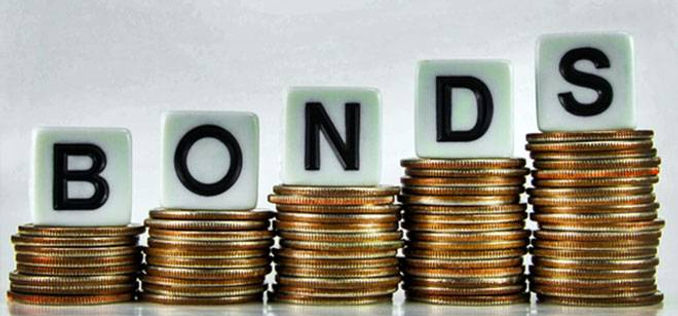A University of Hong Kong Capstone Project

A Glossary of Personal Financial Management Terms
Table of contents:
- Bond
- Credit
- Insurance
- Investment Funds
- Investment products
- Savings account
- Stock
- Market Capitalisation
On this page, many of the definitions refer to FINRA's materials. FINRA, or the Financial Industry Regulation Authority, is an American NGO authorised by the US government to oversee broker-dealers. It operates as one of the US financial regulators under the US securities and exchange commission. We chose to reference their material because a section of their website is dedicated to personal finance. It is easy to read and covers a variety of topics in depth.
Bonds

A bond is a fixed income tool that works on a similar principle as a loan. It is the repayment of cash flow over a specified period of time with a specific interest rate (also called coupon rate). Bonds are usually issued as debt; an investor will buy the bond and will be repaid when the bond matures, and will also benefit from yearly interest rates.
Note: A bond is considered a fixed income because the money repaid on investment is given on a fixed interest (e.g. 5% per year) until it reaches the date of maturity (Chen, 2020).
Example: Tesla Motors is issuing a green bond regarding the development of a new Lithium-ion battery for its upcoming Tesla model 4. The face value of the bond is $2000, the coupon rate is 5%, and the bond reaches maturity after 7 years. You decide to buy 5 bonds, and pay a total sum of $10,000. Since the coupon rate is 5% per year for the next 7 years, you will receive $100 ($2000 * 0.05) a year. When the bond reaches maturity, you will be repaid the initial $10,000 an additional $700.
Issuers: Bonds can be issued by private or public bodies, such as the Bank of England, the US treasury or by corporates (Choudhry et al., 2014). The issuer must also agree to repay the bond holder the original sum invested after a specified period of time, often set as the maturity date.
Maturity: The term of maturity can vary between the range of 1-30 years. Not all bonds reach maturity, and the issuer may redeem the bond before its maturity is reached. These details are usually outlined in the bond prospectus, which investors should consider as they determine their investment strategy (FINRA, 2021a).
Types: Many types of bonds exist, such as corporate bonds, municipal bond, bond ETFs and even green bonds. For further definition of bonds and the type of bonds please follow these links (FINRA, 2021a).
Credit

A credit is contractual agreement between two parties, where a borrower receives money (similar to a loan) at a present time and agrees to repay the amount borrowed to the lender at a specified date later in time, with interest (Investopedia, 2020). The most commonly known type of credit is a credit card. A person might not have enough cash on hand to buy an item, therefore they will use their credit card, and repay the amount borrowed to the bank later.
Insurance

Insurance can be seen as a financial instrument that will protect you against some sort of financial loss. They are often used to minimise the effects of a potential risk, and is often used in risk management strategy. Different types of insurance products are developed to meet specific needs. A well-known example is medical insurance, for instance if you fall ill and require medical care, part of the medical expenses will be covered by the insurance (IFEC, 2021a). Insurance does not only cover health related or personal risk, but also cover property and liability risk. For instance, if you possess car insurance and encounter an accident, you may not have to pay the entirety of the repair bill (IFEC, 2021b).
Investment Funds

Put simply an investment fund, is a pool of money, or collective investment of capital by several investors. The pool of money created is then handled by professional managers, who will invest the financial capital in other financial assets or securities such as stocks and bonds (Investopedia, 2021a). They aim to create positive financial return. Different types of investment funds are available, such as mutual funds (MTF) and exchange traded funds (ETFs) (FINRA, 2013; FINRA, 2021b).
Mutual Fund: A mutual fund is a pool of money is funded different investors. It is then used to invest in a set of different type of asset classes. An example of a mutual fund is an equity fund, which focuses on purchasing stocks (Rollenhagen & Goldman, 2020).
Exchange Traded Funds (ETFs): An ETF is an investment fund which holds assets and securities. Unlike mutual funds, ETFs can be traded on a stock market (HKEX, 2012; Goldman, 2021).
Savings Account

A savings account is a type of bank product. It is often seen as the easiest way to save money. Deposit requirements are very low with few withdrawal constraints. The amount of money deposited will grow slowly over time (IFEC, 2021d). The interest rates for saving accounts are very low, thus the financial returns are also very low (Pritchard, 2020).
Stock

A stock is the ownership of a fraction of a company. When buying a share (or stock) of the company, the investor becomes a shareholder. In return for the financial exchange, the shareholder is granted ownership rights and voting rights (Parameswaran, 2012). The most common arrangement is 1 voting right per share. The voting right is often useful when electing the new director of the company (Parameswaran, 2012). However, it is important to know that a company often issues more than one type of share, also known as class shares, with include different voting rights.
Furthermore, when a company is profitable, it can choose to redistribute its gains through a dividend, which investors can pocket as cash or reinvest.
A simple example is that company Y issues class A stocks (that have 5 voting rights per share) and class B shares (only 1 voting right per share) (Investopedia, 2020b). The return on investment on your initial stock investment is dependent on the company’s performance. For instance, if you purchase a stock at a price of $30 per share and a year later the company has been very successful, the price per share may rise to $50, therefore you could resell a certain amount of your shares and make a profit.
Stocks can be classified in in different types as not all of them behave in the same way and may be affected by different factors, here are some examples of stock types:
-
Common and preferred stocks:
-
Simply put, a common stock represents a share of a company with which comes a voting right (1 share = 1 voting right). If a company's board wants to elect a new chairman, the owner of a common stock would have the right to vote for the new chairman or director of the company.
-
In contrast, preferred stocks generally do not carry any voting right, but associated with certain privileges, such as having priority on receiving higher dividends if the company has achieved its targeted financial goals (Investopedia, 2021b). Some investors purchase preferred stocks because they provide lower but consistent dividends over time. In contrast, a common stock is more volatile, therefore the dividend received is more inconsistent (Investopedia, 2021b).
-
Growth and cyclical stocks:
-
The value of a cyclical stock increases and decreases in accordance with the business cycle. During a recession the price decreases, whereas during an economic boom the price increases.
-
In contrast, the value of a growth stock influenced by the quality of the product from which the company is deriving its sales and the quality of its management, rather than wider economic factors & cycles (Parameswaran, 2012; FINRA, 2021d).
-
Industry & Sector: The economy can be divided into large chunks, often referred to as sectors, classically divided into primary-secondary-tertiary-quaternary. For instance, the financial sector belongs to the tertiary sector. An industry is a more specific part of a sector, for instance real estate companies and banks represent specific industries that are part of the wider financial sector. During a major event, an entire industry may be affected. For example, scarcity in natural gas resources can increase the cost to extract natural gas, and therefore decrease a natural gas company's profit. On the other end, a sector could experience an era of expansion or innovation leading to more investment, an example of this is the green financial market (FINRA, 2021d). Being aware of the current trends and cycles that occur or could affect the industry and sector in which you want to invest will help you build a better and more resilient portfolio. Thus, before making any investment, learn about the sector in which you want to invest and examine different companies' performance.
Selling Stocks
References
-
Chen, J. (2020) Guide to Fixed Income. Available at: https://www.investopedia.com/terms/f/fixedincome.asp [Accessed 18 March 2021].
-
Choudhry, M. et al. (2014) Fixed Income Markets: Management, Trading, Hedging Second Edition. [Online]. Wiley Online Library. Available at: https://onlinelibrarywileycom.eproxy.lib.hku.hk/doi/book/10.1002/9781118638330
-
FINRA (2013) Mutual Funds. Available at: https://www.finra.org/investors/insights/mutual-funds [Accessed 7 March 2021].
-
FINRA (2021a) Bond Basics. Available at: https://www.finra.org/investors/learn-to-invest/types-investments/bonds/bonds-basics [Accessed 7 March 2021].
-
FINRA (2021b) Exchange-Traded Funds. Available at: https://www.finra.org/investors/learn-to-invest/types-investments/investment-funds/exchange-traded-fund [Accessed 7 March 2021].
-
FINRA (2021c) Types of Investments. Available at: https://www.finra.org/investors/learn-to-invest/types-investments [Accessed 7 March 2021].
-
FINRA (2021d) Types of stocks. Available at: https://www.finra.org/investors/learn-to-invest/types-investments/stocks/types-of-stocks [Accessed 2 February 2021].
-
Goldman, A. (2021) What's an ETF -The Ultimate Guide. Available at: https://www.wealthsimple.com/en-ca/learn/what-is-etf [Accessed 18 March 2021].
-
HKEX (2012) Understanding Exchange Traded Funds. Available at: https://www.hkex.com.hk/-/media/HKEX-Market/Products/Securities/Exchange-Traded-Products/Launch/HKEX_ETF-Leaflet.pdf?la=en [Accessed 7 March 2021].
-
IFEC (2021a) Do young people need insurance? Available at: https://www.ifec.org.hk/web/en/young-adults/money-management/do-young-people-need-insurance.page [Accessed 2 February 2021]
-
IFEC (2021b) Insurance basics. Available at: https://www.ifec.org.hk/web/en/financial-products/insurance/basics/insurance-basics.page [Accessed 7 March 2021].
-
IFEC (2021c) Investment products. Available at: https://www.ifec.org.hk/web/en/investment/investment-products/index.page [Accessed 7 March 2021].
-
IFEC (2021d) Saving for the future. Available at: https://www.ifec.org.hk/web/en/moneyessentials/savings.page[Accessed 7 March 2021].
-
Investopedia (2020a) Credit. Available at: https://www.investopedia.com/terms/c/credit.asp [Accessed on 2 February 2021]
-
Investopedia (2020b) Class of Shares. Available at: https://www.investopedia.com/terms/c/class.asp [Accessed 7 March 2021].
-
Investopedia (2020c) Market Capitalization Defined. Available at: https://www.investopedia.com/investing/market-capitalization-defined/ [Accessed 7 March 2021].
-
Investopedia (2021a) Investment Fund. Available at: https://www.investopedia.com/terms/i/investment-fund.asp[Accessed 7 March 2021].
-
Investopedia (2021b) Preferred vs. Common stock: What’s the difference? Available at: https://www.investopedia.com/ask/answers/difference-between-preferred-stock-and-common-stock/ [Accessed 2 February 2021].
-
Parameswaran, S. (ed.) (2012) Fundamentals of Financial Instruments: An introduction to Stock, Bonds, Foreign Exchange, and Derivatives. [Online]. Wiley Online Library. Available at: https://onlinelibrary-wiley-com.eproxy.lib.hku.hk/doi/book/10.1002/9781119199625
-
Pritchard, J. (2020) What is a Savings Account? Definitions and Examples of Savings Account. Available at: https://www.thebalance.com/savings-accounts-4073268 [Accessed 7 March 2021].
-
Rollenhagen, L. & Goldman, A. (2020) What Are Mutual Funds? And How to Invest in Them. Available at: https://www.wealthsimple.com/en-ca/learn/how-to-invest-in-mutual-funds [Accessed 18 March 2021].
Market Capitalisation
Market capitalisation is the total market value of a company in dollars. It is calculated by multiplying the stock price per share by the number of outstanding shares. For example, Company A's price per share is $50, and it has 10 million outstanding shares. Its market capitalisation is $500 million. Outstanding shares refers to the total number of stocks that the company has issued to public investors, employees and officers, and institutional investors (Investopedia 2020c).
Market capitalisation can be split into different classes to differentiate the range of market caps but also helps to classify a company’s market importance. The classes are the following:
-
Mega-cap: where the market cap for a company is greater or equal to $200 billion. The largest companies and industry leaders are found within that range such as Apple or Tesla.
-
Large-cap: where a company’s market capitalisation is within $10 billion to $200 billion dollars.
-
Mid-cap: Companies have a value between $2 billion - $10 billion.
-
Small-cap: The value ranges between $300 million and $2 billion.
-
Micro-cap: the market capitalisation is situated between $50 million to $300 million.
-
Nano-cap: Companies with a market capitalisation less than $50 million. Such companies are so small that their stocks are traded “over the counter” rather than on a stock exchange.
Market capitalisation is useful in comparing companies’ profitability and the value of their stocks. Mega and large cap are considered "safer investments" or “blue chip” stocks that are stable and secure. Other cap prices fluctuate more and are considered to be less secure (Investopedia, 2020c).
Investment Products

These are tools in which individuals or firms can invest in order to achieve a set of financial goals, such as growing their personal wealth. There are many investment products, such as stocks, bonds, investment funds and bank products. Each usually have certain associated costs, fees and risks. Before investing, it is always essential to research the product and associated risk (FINRA, 2021c; IFEC, 2021c).